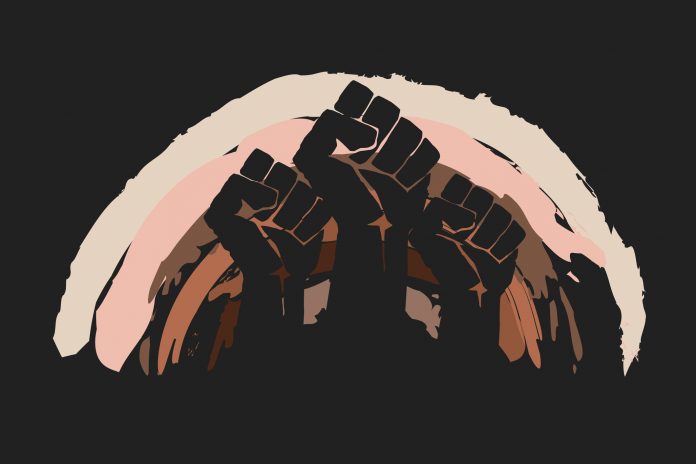By Jennifer Kabbany
La Crosse County District Attorney Tim Gruenke charged a Milwaukee teen on June 16 with one misdemeanor count of negligent handling of burning materials after she allegedly set a fire in her dorm at Viterbo University in Wisconsin.
While 17-year-old Victoria Unanka has pleaded not guilty, police have video surveillance footage and her own confession, according to the criminal complaint.
Gruenke said the young black woman created a “dangerous situation to get attention” in what appears to be the nation’s latest example of a campus hate-crime hoax, one of many dozens that have plagued colleges and universities in recent years, painting a false picture of campuses fraught with racism and helping advance the cause of critical race theory.
Unanka’s case started with the discovery of racist graffiti targeting students of color at her Catholic liberal-arts school.
Administrators canceled midday classes on March 11 so the campus could protest the vandalism. Unanka was a keynote speaker at the demonstration attended by hundreds of students and faculty.
Viterbo President Glena Temple also announced in an email to the campus community plans for a prayer vigil, student and employee listening sessions, and educational and community-based activities to address hate, bias and racism.
A month later, a new scandal rocked Viterbo when a fire was discovered in a garbage can inside a dormitory lounge. Immediately students discussed it as the latest heinous act of campus racism because the fire was started near Unanka’s dorm room.
But in early May, Temple announced the investigation into both the racist graffiti and the fire was closed, and a student was in the process of being expelled. Temple, who resigned on June 25 to take another job, did not mention Unanka’s name nor the real reason the fire was set.
The spectacle of false-flag racism has become sadly common. Wilfred Reilly, assistant professor of political science at Kentucky State University and author of 2019 book “Hate Crime Hoax: How the Left is Selling a Fake Race War,” has examined 643 cases of race hoaxes to date. Almost one-third have taken place on a college, university or senior high school campus.
After Donald Trump was elected president in 2016, a message scribbled on a whiteboard at Elon University in North Carolina, “Bye Bye Latinos Hasta La Vista,” was written by a Latino student upset with the results.
In 2017, a note that used the n-word at St. Olaf College in Minnesota threatened a female black student, sparking intense protests, but it was actually written by the same woman who discovered it.
In January 2018, an 18-year-old black man was arrested for racially charged graffiti found at the University of Maryland.
This past spring, police in White Bear Lake, Minnesota, determined that an Instagram account that sent racist messages was created by a female black student.
When accusations of racism surface, the mainstream media lavishes coverage on them. Those that are exposed as hoaxes, however, rarely receive equal treatment.
College campuses are some of the most welcoming, inclusive, “safe spaces” in the country.
Hoaxes are motivated by a desire to perpetuate identity politics — a big business in higher education and a political divide that has torn America in two.
Sociologists Bradley Campbell and Jason Manning have argued the left has weaponized a victimhood culture to force conservatives to bow to their worldview.
The campus hate-crime hoax trend shows that when there are no boogeymen at which to point the finger, they make ones up.
For students who commit hate-crime hoaxes, it can also be for personal gain. Today’s victim of a hate crime is celebrated as a martyr and given prominence and accolades. They are championed as heroic and courageous for standing strong against adversity.
Is it any wonder, then, that police allege that when they asked Unanka why she started a fire in her dorm lounge at Viterbo University, she replied: “no one was listening to me anymore.”









How about a link to print articles?
Thanks for your suggestion, Sidney. I’ll check with our tech person and see if we can’t make that available soon.
Didn’t see the TAMU hoax listed, but here is a link…
https://www.kbtx.com/2020/07/10/texas-am-police-say-student-who-reported-racist-notes-placed-them-there-himself/
Journalists need to be more direct, and briefer in their articles. In this example it would have been more effective, in my opinion, to open with the 10th paragraph, and the four immediately following it. I see the practice of opening articles with generalizations before getting to the particulars as weak writing.
I realize that writers want to emulate the style of writers who win Pulitzer prizes, but the basic precept of getting out the Who, What, When, Where and Why is still the best at getting to the heart of a report.
Expanding on my previous comment: I see this article’s main subject as hoaxes, rather than the example that leads the discussion. Therefore, the examples beginning in the 10th paragraph are the subject rather than the Jenkins affair.
[…] is Selling a Fake Race War,” has examined 643 cases of race hoaxes to date. Almost one-third have taken place on a college, university or senior high school […]